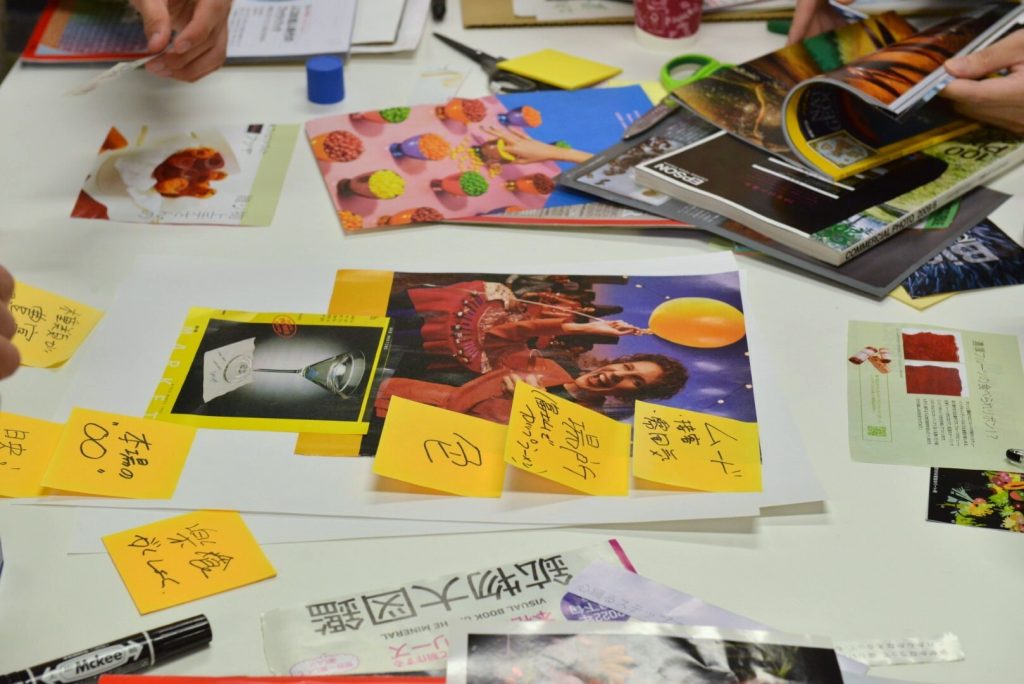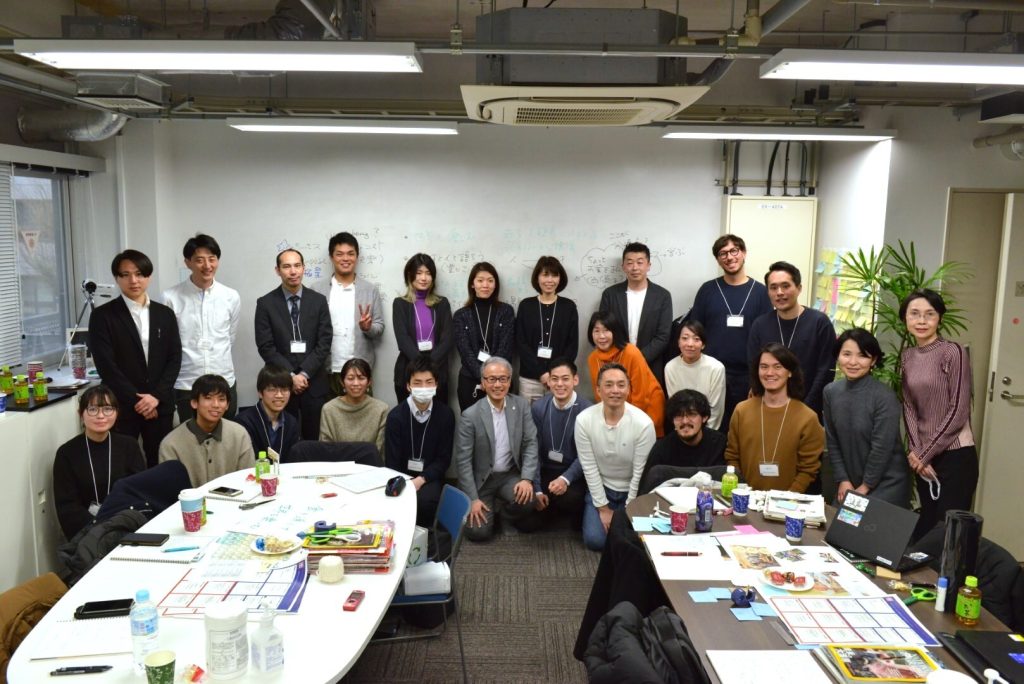3月5日(火)東京工業大学大岡山キャンパスにて、産学協働プログラム「Hybrid Innovation (HI) 2023」のセッション10を開催しました。このプログラムは、英国ロンドン芸術大学Central Saint Martins校 (CSM) と共同開発したオリジナルメソッドに基づき、講義・実践ワークショップ・ファシリテーション等を組み込んで全10セッションを提供しています。
東工大環境・社会理工学院において野原が主宰するSTADHIーScience & Technology + Art & Design Hybrid Innovationの理念をもとに、アート、デザイン、テクノロジー、サイエンスの知見と方法論を融合。ビジネス環境におけるイノベーションとコミュニケーションの促進を目指し、学際的アプローチに取り組んでいます。

最終回となった本セッションでは、ゲストとして東工大の木村英一郎教授を迎え、まずは「Alignment of Design(AOD) でwell-being の実装を加速する」の題材で情報提供をいただきました。
食と健康のイノベーションをライフワークに掲げる木村先生は、今回の講義を通し、イノベーションを起こすのには会社の「パーパス(目的)」が必要であることを、実際の食品会社での活動を例に強調されました。
続くアクティビティでは、各グループにwell-beingを題材としてコラージュを制作していただき、それにキャッチコピーをつけることで、出来上がったコラージュと言葉の整合性を確認し合い解像度を上げていきました。各アイデアのプレゼンテーション後のディスカッションでは、会社としての目的と個々人でのやりたいことのシナリオをアラインさせる重要性を再認識することができました。
後半戦では引き続きHIプラクティスにもどり、来たるシンポジウムで発表する最終成果物の方向性と、その体現方法をグループディスカッションにて深掘りしていきました。
新ツール「HIプロジェクト・キャンバス」を利用し、企業概要やバリュー、新規提案のみならず、未来シナリオ、サスティナビリティやインクルーシビティなどの実現可能性を明確化し、社会課題への取り組みを含めたプロポーザルシートを作っていただきました、それを通し、最終成果物がただの思いつきレベルの発想にとどまらないよう、堅実な基盤作りに取り組んでいただきました。

今年の全セッションが今回で終わりましたが、4月の成果発表シンポジウムまでの残りわずかな時間で、これまで経験したことをHIプラクティスで活用し、本プログラムの集大成となる成果物の最終発表シンポジウムまで、運営陣一同サポートを続けてまいります。
HIメソッド・昨年のプログラムなど、HIについてさらなる情報が欲しい方はこちら: https://www.tse.ens.titech.ac.jp/~deepmode/csm/blog/未来を創るhybrid-innovation/ お問い合わせは事務局へ: ogiuchi.s.aa[@半角に変更してください]m.titech.ac.jp
すでに終了したプログラムの記事はこちらです。
Session 10 of the Tokyo Institute of Technology’s industry-academia collaborative programme Hybrid Innovation 2023 (HI) was held at the Ookayama Campus on Tuesday, 5 March 2024.
In this final session, Professor Eiichiro Kimura from Tokyo Institute of Technology was invited as a guest speaker to give a lecture on the topic of ‘Alignment of Design (AOD) to accelerate the implementation of wellbeing’.
Professor Kimura, whose lifework is innovation in food and health, discussed the need for a company’s purpose in order to innovate, using actual activities at a food company as an example.
In the activity, each group was asked to create a collage on the subject of wellbeing and add a catchphrase to it. In the discussion that followed the presentation, the importance of aligning the company’s objectives with the scenarios of what each individual wants to do was reaffirmed.
In the second half of the programme, the participants continued to return to HI Practice and delved deeper into group discussions on the direction of the final deliverables to be presented at the symposium and how to embody them.
In this programme, the participants used the Hybrid Innovation Project Canvas to create not only a company profile and value proposition, but also a scenario for the future and a proposal sheet that included a clear statement of feasibility, such as sustainability and inclusiveness, as well as initiatives to address social issues. The project was dedicated to creating a soil in which the final deliverables would not be just an idea.
Although all the sessions have now finished, the management team will continue to support the symposium, where the final product will be the culmination of the programme, by utilising the experience gained from the previous sessions in the HI Practice in the short time remaining before the symposium to present the results.
You can find further information on the HI programme here. For an outline of the content of previous sessions, please visit our blog.
For inquiries, please contact the secretariat:. ogiuchi.s.aa[at]m.titech.ac.jp